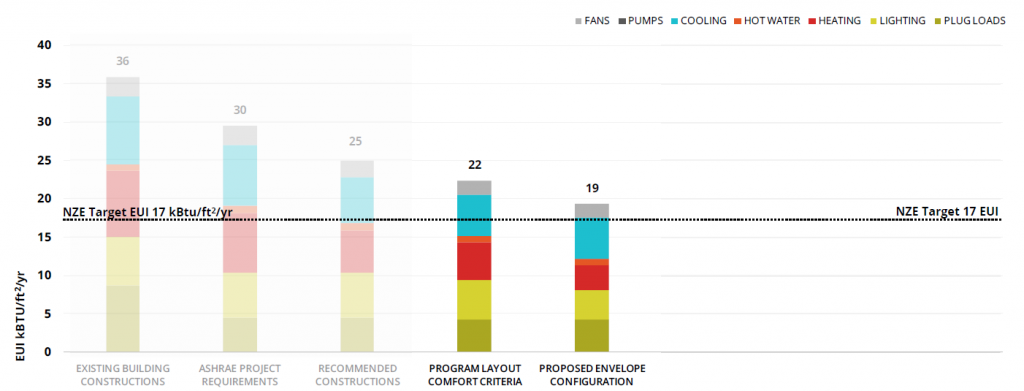ASHRAE is synonymous to holding high energy efficiency benchmarks. The organization purchased a 1970s mid-century building to relocate its global headquarters to Atlanta by renovating this 67,000 sft facility into a NZEB. ASHRAE was very clear about its objectives – to develop a project that is economically feasible, scalable and replicable by an average building owner to achieve net-zero. The project aimed to showcase the latest technology achieving superior efficiency and comfort with net-zero operation while representing the organization’s sustainability values.
In this webinar, Shreshth Nagpal (Principal, Integral Group) enumerates the design principles and energy optimization strategies adopted by the team to develop a high performance facility.
Shresth starts by describing the program requirements and the vision of the project team. A conventional building of equivalent area with limited energy conservation measures in place, would average at an Energy Use Index (EUI) of around 36 kBtu/sq.ft/yr [105 kwh/sqm-yr] whereas ASHRAE had set a target at around 30 kBtu/sq.ft/yr [88 kwh/sqm-yr].
Since the building is envisioned as a net-zero facility, the RE generation must offset energy consumption. According to a preliminary solar generation analysis, the 14,000 sft building roof with a total installation of 210-260 kWp capacity solar PV would offset around 17 kBtu/sq.ft/yr [50 kWh/sqm-yr]. Hence, this became the new benchmark, which is around 52% lower than the baseline target! In order to push the boundaries of building performance, it was pertinent for the project team to chart a systematic approach to bring down the thermal load.
The first step to energy reduction in this project has been incorporating passive design strategies to increase thermal and visual comfort while reducing the energy use, This alone could reduce the EUI from 30 kBtu/sq.ft/yr [88 kWh/sqm-yr] to 19 kBtu/sq.ft/yr [56 kWh/sqm-yr]. Some of the strategies included optimization of the facade, enhancing daylight and program organization. To limit heat ingress into the building, the east-west facades have been designed with a lower WWR of 30% compared to the 40% on the north-south facades. Strategically placed vertical and horizontal shading systems cut-off glare and excessive heat. For better daylight penetration, skylights are punched over the circulation areas. Further, the envelope was optimized through a sensitivity analysis. In terms of zoning, the spaces are stratified such that all the zones with similar space conditioning and daylight requirements are clubbed together.

The designers expand the comfort range by adopting a mixed-mode ventilation system. When the outdoor conditions are optimal, the windows can be opened to channel fresh air. Further, ceiling fans help elevate airspeeds and enhance thermal comfort. In terms of systems, the design team have installed radiant ceiling panels and Dedicated Outside Air System (DOAS) to isolate the sensible load from ventilation requirements. The DOAS takes care of the heat recovery from the exhaust as well as demand control ventilation. Through these measures, the team reduced the EUI to 16 kBtu/sq.ft/yr [47kWh/sqm-yr].
The design team showcased the viability of retrofitting an average conventional building into a high performance net-zero facility by implementing the right strategy at the right stage.
This webinar was conducted on 6 September 2019.



